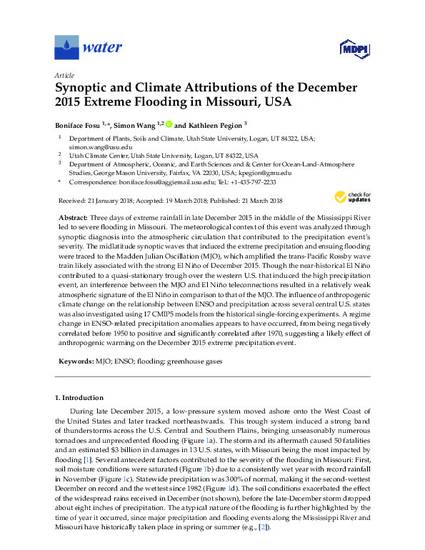
Three days of extreme rainfall in late December 2015 in the middle of the Mississippi River led to severe flooding in Missouri. The meteorological context of this event was analyzed through synoptic diagnosis into the atmospheric circulation that contributed to the precipitation event’s severity. The midlatitude synoptic waves that induced the extreme precipitation and ensuing flooding were traced to the Madden Julian Oscillation (MJO), which amplified the trans-Pacific Rossby wave train likely associated with the strong El Niño of December 2015. Though the near-historical El Niño contributed to a quasi-stationary trough over the western U.S. that induced the high precipitation event, an interference between the MJO and El Niño teleconnections resulted in a relatively weak atmospheric signature of the El Niño in comparison to that of the MJO. The influence of anthropogenic climate change on the relationship between ENSO and precipitation across several central U.S. states was also investigated using 17 CMIP5 models from the historical single-forcing experiments. A regime change in ENSO-related precipitation anomalies appears to have occurred, from being negatively correlated before 1950 to positive and significantly correlated after 1970, suggesting a likely effect of anthropogenic warming on the December 2015 extreme precipitation event.
Available at: http://works.bepress.com/shih-yu_wang/106/
